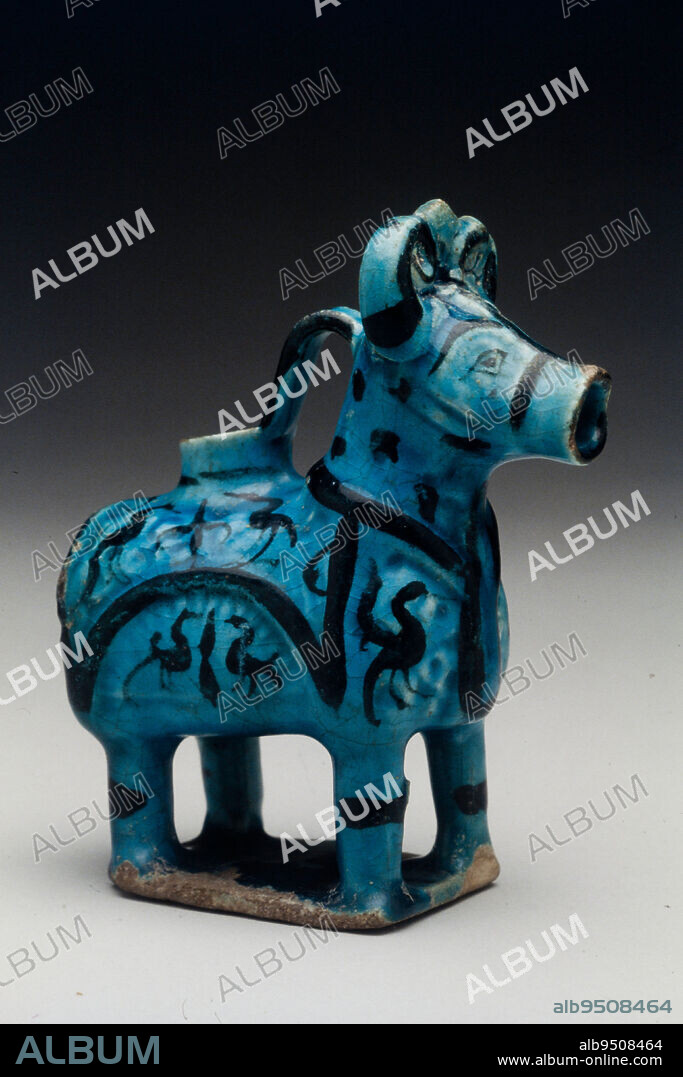alb9508464
Aquamanile (Ram-shaped Ewer), 13th-14th century, 7 in. (17.78 cm), Stonepaste with clear turquoise glaze, black underglaze-painted decor, Kashan ware, Iran, Seljuk period (1038- c. 1194), Although round ceramic sculpture is relatively rare in Islamic art, decorated figures in both metal and ceramic ware were popular in Iran and Turkey during Seljuk rule. The bull shape, shown here in two examples, was the most common, but camel, ram, and lion-shaped vessels have survived as well.

|
Añadir a otro lightbox |
|
Añadir a otro lightbox |



¿Ya tienes cuenta? Iniciar sesión
¿No tienes cuenta? Regístrate
Compra esta imagen

Descripción:
Ver traducción automática
Aquamanile (Ram-shaped Ewer), 13th-14th century, 7 in. (17.78 cm), Stonepaste with clear turquoise glaze, black underglaze-painted decor, Kashan ware, Iran, Seljuk period (1038- c. 1194), Although round ceramic sculpture is relatively rare in Islamic art, decorated figures in both metal and ceramic ware were popular in Iran and Turkey during Seljuk rule. The bull shape, shown here in two examples, was the most common, but camel, ram, and lion-shaped vessels have survived as well.
Crédito:
Album / quintlox
Autorizaciones:
Modelo: No - Propiedad: No
¿Preguntas relacionadas con los derechos?
¿Preguntas relacionadas con los derechos?
Tamaño imagen:
3744 x 5616 px | 60.2 MB
Tamaño impresión:
31.7 x 47.5 cm | 12.5 x 18.7 in (300 dpi)
Palabras clave:
7 • AGUAMANIL • ARTE ISLAMICO • CAMELLO • CARNERO • COMUNES • IRAN • METAL • METÁLICA • PERIODO SELJUK • POPULAR • POZO • SOBREVIVIÓ • TURQUIA
 Pinterest
Pinterest Twitter
Twitter Facebook
Facebook Copiar enlace
Copiar enlace Email
Email
